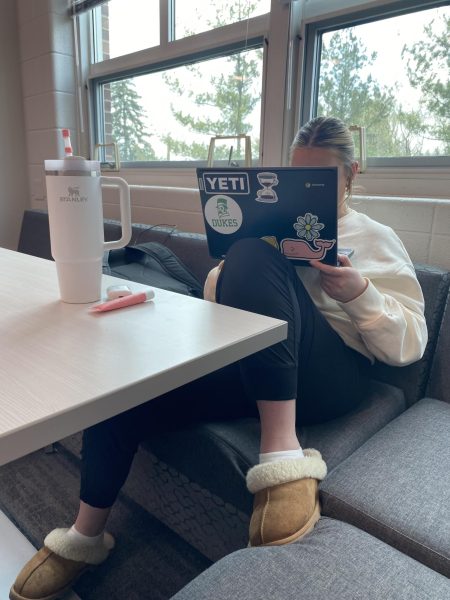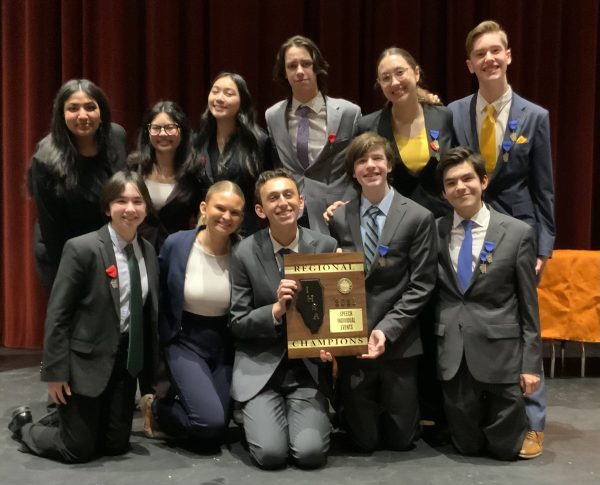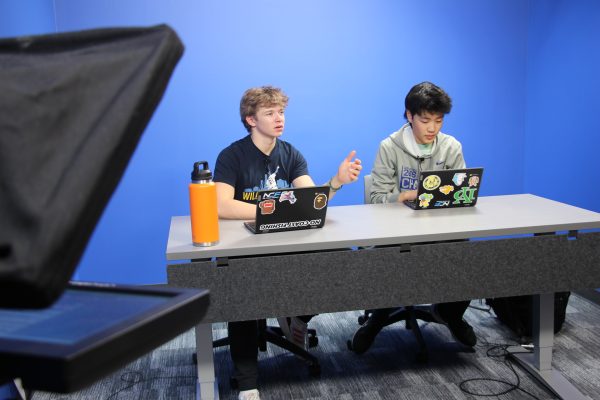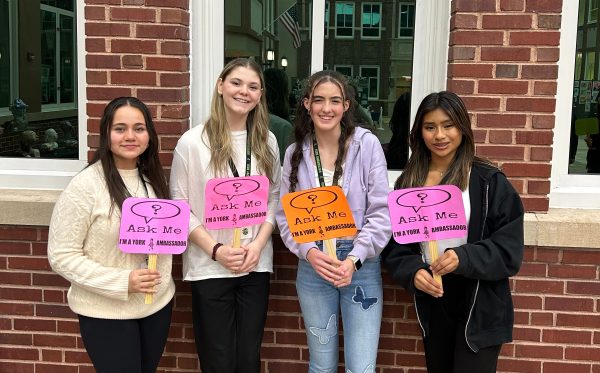Language as a Bridge, Not a Barrier
How to say ‘hello’ in multiple different languages spoken here at York, including Spanish, Malayalam, Arabic, Polish, and more.
It’s hard to imagine moving to a new place with a culture and language completely different from what you’re used to, especially as a high school student. English learner (EL) students experience this difficult change every day, both in the halls of York and all across the country.
Throughout the U.S., the number of students who are involved in an EL program has been steadily increasing in recent years. According to the National Center for Education Statistics, the percentage of public school students in the United States who were ELs was higher in the fall of 2015 (9.5 percent, or 4.8 million students) than in 2000 (8.1 percent, or 3.8 million students). That’s an increase of roughly one million students.
This nation-wide trend is also seen with the EL students here at York. Over the past seven years, the population has grown from around 70 active EL students to 133. Of the 133, 75 percent are Spanish speaking.
Junior Brisa Gutierrez-Schmidt is an EL student who was considered a beginner when she first started high school. Gutierrez-Schmidt came here from Mexico for her freshman year. When she arrived, she was taking mostly bilingual and EL classes. Now, she takes all regular classes except for EL English.
“EL classes are taught in English but the teacher makes special modifications for students that are learning the language.” EL teacher Mr. Rubio said. “The class is in English, but the teacher understands that they’re learning English still.”
In addition to the difficulty of communication for EL students, there are a slew of other struggles they face when adjusting to York.
“The school is so, so big,” Gutierrez-Schmidt said. “I got lost and I couldn’t ask anybody for help because I didn’t speak English.”
Another EL student, junior Yelyzaveta Andryushchenko, whose first language is Ukrainian, described the same confusion of navigating the school on her first day.
“I had no idea where I was in the school,” Andryushchenko said. “I missed my ambassador meeting…[and] I had to look at a map for five minutes just to find out where I was going.”
Andryushchenko is in a mix of regular and EL classes due to her five years of background in English and exceptional math and science skills. Even with this background, there is no staff here who speaks Ukranian, so the adjustment to an entirely English speaking environment was difficult.
“I was talking to one [EL student] from Poland,” Rubio said. “He was describing how he would get home and fall asleep. He said he had to try so bad [sic] to understand English that it just overworked him.”
Learning a new language all day on top of doing school work is exhausting for these students, but that still doesn’t account for those that have jobs outside of school. Many go straight to work after school, and then stay there late into the night until 10 p.m., midnight or sometimes even 1 a.m.
“Work is one of the big reasons why a lot of our students either discontinue school or have a hard time keeping up with school and attendance,” EL counselor and coordinator Diane Oliveros said. “It goes far beyond just work. It’s work to pay rent. It’s work to pay for their own food. It’s work to pay for their own clothes. It’s work to pay for the crossing over from their country to the U.S- you have to pay that loan back, and that’s a loan that’s being held over the heads of their families back in their own countries.”
Communication, schoolwork and money are often struggles on many of these students’ plates, not to mention the social aspect of high school. A vast majority of EL students tend to befriend those who speak the same language as they do.
“A lot of it is just human nature to try and bond with those that have similar experiences,” Rubio said. “That being said, we do have a lot of students that are very social and will try to branch out.”
Students are also encouraged to join extracurriculars. Gutierrez-Schmidt, for example, is involved in Latina Dreamers, which is sponsored by Oliveros.
“I’ve had a lot of girls over the years who feel a lot more connected with everyone from York and feel that they’re not alone,” Oliveros said in regards to Latina Dreamers.
With the support of EL staff, these students are likely to get involved with, and feel a part of, the York community despite their differences. However, some have expressed that, unfortunately, this doesn’t always happen.
“With the political climate that we have, it’s very scary [for] some of our students,” Oliveros said. “Sometimes they will put what’s going on […] outside of school into school and think, ‘well, everyone’s judging me because this is how I look, and I’m different’.”
The feeling of judgement does sometimes come true in instances of stereotyping towards students, particularly towards Spanish-speakers.
“Don’t have stereotypes about people,” Andryushchenko said. “I think it’s more with people who are from Latin America. I’ve seen a lot of divide.”
Andryushchenko pointed out instances where people stereotype all Spanish-speakers as Mexicans, when in reality York has EL Spanish-speakers from Guatemala, Puerto Rico, etc.
EL students and staff alike have ideas to bring York students together, despite any differences or backgrounds that they have.
“Some things we’ve worked on before are some [regular] Spanish classes, Spanish 4 and Spanish 5, met with our newcomer EL class,” Ms. Oliveros said. “Also, I know for a fact that we’re working on a program for the [York] Ambassadors to have more involvement with our transfer EL students.”
Beyond programming, the idea of simply being kind and welcoming to one another can go a long way.
“I think that if [people] see somebody struggling with their language, they should help them and be friendly, because sometimes we’re afraid,” Gutierrez-Schmidt said. “Maybe they could be more welcoming or understanding.”
Despite the hardships EL students go through, the EL department continues to help this group succeed and use their knowledge of language to help them grow.
“I started EL in elementary school myself,” Rubio said. “I want to be able to use myself as an example for being able to overcome the ‘language as a barrier’ metaphor and begin to embrace the ‘language as a bridge’ or ‘language as a resource’ metaphors instead.”
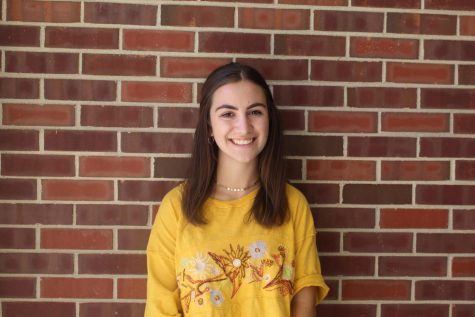
Mary Kett is a senior who is very excited to be on the TIY and yearbook staff for the second year. She runs cross country at York and enjoys spending time...






